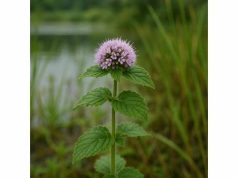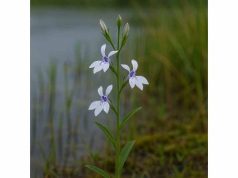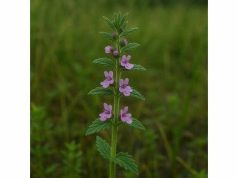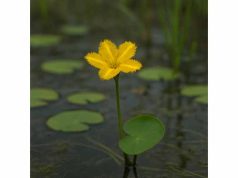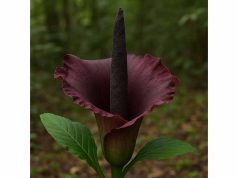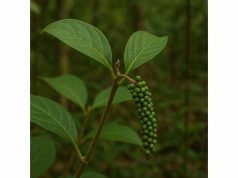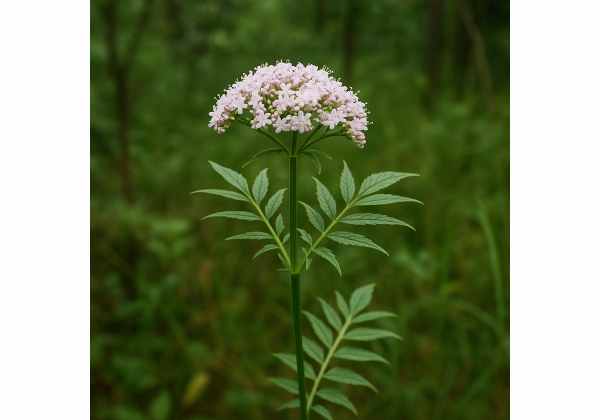
Valerian (Valeriana officinalis) stands as one of the most revered herbal allies for relaxation and sleep support, lauded across traditional pharmacopoeias and modern natural medicine alike. Its roots harbor a complex blend of valepotriates, sesquiterpenes, and essential oils—active compounds linked to calming effects, nervous system modulation, and mild sedative action. Employed historically for insomnia, anxiety, and stress relief, Valerian also offers potential benefits for muscle relaxation and menstrual discomfort. Available as teas, tinctures, capsules, and topical preparations, Valerian applications span therapeutic and everyday wellness contexts. By exploring its botanical identity, chemical makeup, health advantages, practical uses, empirical research, and common queries, this guide illuminates how Valerian properties can enhance well-being.
Table of Contents
- Botanical Characteristics and Identification
- Chemical Constituents and Bioactive Components
- Therapeutic Advantages and Fundamental Qualities
- Applications and Precautionary Considerations
- Research Discoveries and Noteworthy Findings
- Common Inquiries Addressed
Botanical Characteristics and Identification
Valerian (Valeriana officinalis) is a herbaceous perennial native to Europe and parts of Asia, now cultivated worldwide for its fragrant flowers and medicinal roots. Belonging to the Caprifoliaceae family, its taxonomy unfolds as:
- Kingdom: Plantae
- Order: Dipsacales
- Family: Caprifoliaceae
- Genus: Valeriana
- Species: V. officinalis
Morphology & Habit
Valerian typically grows between 1–1.5 meters tall, forming clumps of erect, hollow stems topped by flat‑topped clusters of fragrant, pale pink or white flowers that bloom from June to September. Its leaves are pinnate, divided into lanceolate leaflets with serrated edges, emitting a distinct musk-like aroma when crushed. Beneath ground lie branching rhizomes and thick, knotty roots—once harvested and dried, these roots yield the herb’s signature active constituents.
Growth Conditions & Habitat
- Climate: Prefers temperate zones with cool nights and moderate rainfall. Thrives in USDA zones 4–8.
- Soil: Rich, well‑drained loam with pH 5.5–7.5. Soil moisture should be consistent, but waterlogging can harm the roots.
- Light Requirements: Full sun to partial shade. In hotter climates, afternoon shade helps preserve volatile oils.
- Ecological Role: Pollinated primarily by bees and butterflies, Valerian’s nectar-rich blooms support pollinator populations. Birds sometimes harvest seeds in autumn.
Cultivation & Harvest Practices
Gardeners cultivate Valerian from seed or division. When grown from seed, stratify for 2–4 weeks at 4 °C to improve germination. Once established, it self-seeds readily—containment is recommended to prevent unwanted spread. Harvest roots in autumn of the second year when bioactive concentrations peak. After excavation, wash, slice, and air‑dry in a shaded, ventilated area until brittle to the touch, preserving the delicate valepotriates.
Identification Tips for Foragers
- Flower Structure: Look for corymbs of small, tubular, sweet-scented flowers.
- Leaf Arrangement: Observe pinnate leaves with 7–20 oval serrated leaflets.
- Fragrance: Crush a leaf—Valerian’s characteristic pungent odor is unmistakable.
- Root Appearance: Mature roots are knotted, yellowish-brown, and fibrous when split.
Understanding these botanical characteristics and growth requirements ensures correct identification, optimal cultivation, and sustainable wild-harvesting practices—crucial for conserving natural populations and maximizing medicinal efficacy.
Chemical Constituents and Bioactive Components
Valerian’s therapeutic prowess derives from a synergistic array of phytochemicals concentrated within its roots and rhizomes. Key Valerian Active Compounds include:
- Valepotriates
- Structure & Types: Iridoid esters such as valtrate, isovaltrate, and valeranone.
- Actions: Believed to modulate gamma‑aminobutyric acid (GABA) receptors, enhancing inhibitory neurotransmission for sedative and anxiolytic effects.
- Stability Note: Valepotriates degrade easily; proper drying and storage maintain potency.
- Sesquiterpenes
- Examples: Valerenic acid, hydroxyvalerenic acid, and acetoxyvalerenic acid.
- Mechanisms: Inhibit GABA transaminase and bind to GABA_A receptors, complementing valepotriate activity.
- Implication: Primary contributors to Valerian’s calming, sleep-promoting properties.
- Essential Oils
- Composition: Contains borneol, bornyl acetate, patchoulene, and other monoterpenes.
- Role: Provide mild antispasmodic and muscle‑relaxant effects; contribute to the characteristic aroma.
- Alkaloids
- Presence: Small amounts of actinidine and chatinine detected.
- Potential Effects: May interact with central nervous system pathways, though research remains limited.
- Lignans and Flavonoids
- Examples: Linarin, hesperidin, and 6‑methoxytricin.
- Benefits: Offer antioxidant properties and may indirectly support neurological health.
- Amino Acids
- Gamma‑aminobutyric acid (GABA): Endogenous inhibitory neurotransmitter present in trace amounts.
- Taurine: Neuromodulatory amino acid assisting in neuroprotection.
- Phenolic Acids
- Notable Acids: Vanillic, caffeic, and chlorogenic acids.
- Actions: Contribute mild anti‑inflammatory and antioxidant support.
- Other Constituents
- Starch and Mucilage: Provide bulk and aid in gentle digestive soothing.
- Minerals: Trace magnesium and potassium may support muscle relaxation.
This complex phytochemical tapestry enables Valerian’s Medicinal Properties—synergistic interactions among valepotriates, sesquiterpenes, and flavonoids create a multi‑targeted approach to nervous system modulation, muscle relaxation, and mild sedation.
Therapeutic Advantages and Fundamental Qualities
Valerian’s health‑supporting profile centers on its calming, sleep‑enhancing, and muscle‑relaxant attributes. Major Valerian Benefits include:
1. Sleep Induction and Quality Improvement
- Mechanism: Valepotriates and valerenic acid bind GABA_A receptors, reducing neuronal excitability.
- Clinical Insights: Studies report shortened time to sleep onset by 20–30 minutes and increased deep (slow‑wave) sleep stages.
- Practical Tip: Take 300–600 mg of standardized extract or brew a tasse de la nuit tea 30–60 minutes before bedtime.
2. Anxiety and Stress Reduction
- Neurotransmitter Modulation: Enhanced GABAergic activity and potential serotonergic interactions calm anxious thought patterns.
- Real‑Life Example: Patients experiencing situational anxiety before presentations report modest reductions in heart rate and subjective stress scores after Valerian intake.
3. Muscle Relaxation and Spasm Relief
- Antispasmodic Effects: Essential oils such as borneol provide smooth muscle relaxation.
- Use Case: Ease menstrual cramps and tension headaches by combining Valerian with magnesium or chamomile for compounded relaxation.
4. Cognitive Function and Mood Support
- Indirect Benefits: By improving sleep quality and reducing stress, Valerian indirectly enhances mood stability, attention span, and daytime energy.
- Anecdote: Students supplementing with Valerian during exam periods note clearer focus and fewer sleep‑related disruptions.
5. Nervous System Protection
- Antioxidant Activity: Flavonoids and phenolic acids guard neurons against oxidative stress.
- Potential Role: May offer adjunctive support in age‑related cognitive decline, though more research is needed.
6. Digestive Comfort
- Mild Soothing: Traditional use for indigestion, gas relief, and irritable bowel symptoms via smooth muscle relaxation.
- Preparation: A warm infusion post‑meal can soothe stomach discomfort.
7. Cardiovascular Calming
- Blood Pressure Effects: Sedative properties can lower mild hypertension by mitigating sympathetic overactivity.
- Guidance: Monitor blood pressure if combining with prescription antihypertensives.
8. Headache and Migraine Relief
- Combined Action: Muscle‑relaxant and anxiety‑reducing effects alleviate tension headaches; used alongside feverfew in migraine prevention.
These Fundamental Qualities create a holistic relaxation and wellness profile—Valerian’s ability to harmonize mind and muscle underpins its enduring reputation as a natural sedative and stress‑reducer.
Applications and Precautionary Considerations
Valerian’s versatility shines through diverse delivery forms and usage contexts. Below are practical Valerian Uses and key safety notes.
Culinary & Infusion Preparations
- Bedtime Tea: Steep 1–2 tsp dried root (2–3 g) in hot water for 10–15 minutes; sip 30–60 minutes before sleeping.
- Relaxation Blend: Combine Valerian with lemon balm, chamomile, and lavender for a synergistic calming infusion.
Supplement Forms
- Capsules/Tablets: Standardized to 0.8% valerenic acid or providing 300–600 mg total extract.
- Tinctures: 1:5 root:solvent ratio in 40–60% alcohol; 1–2 mL (20–40 drops) diluted in water.
- Liquid Extracts: Convenient for dose titration, offer rapid onset within 20–30 minutes.
Topical Applications
- Aromatherapy: Valerian essential oil diffused sparingly (due to strong odor) can promote relaxation.
- Massage Oils: Blend Valerian tincture or infused oil with carrier oils (sweet almond, jojoba) for muscle‑relaxing rubs.
Dosage Guidelines
- Sleep Support: 300–600 mg extract or 2–3 g dried root tea nightly.
- Anxiety Relief: 300 mg extract up to three times daily or 20–40 drops tincture as needed.
- Muscle Spasms: 300 mg extract before physical activity; follow with topical application.
Safety & Contraindications
- Daytime Drowsiness: Avoid operating heavy machinery for 6–8 hours post-dose.
- Additive Sedation: Do not combine with alcohol, benzodiazepines, or other sedative drugs without medical supervision.
- Pregnancy & Breastfeeding: Insufficient data—use only under professional guidance.
- Liver Interaction: Rare reports of hepatotoxicity—monitor if using long-term or in high doses.
- Allergies: Possible reactions in those sensitive to Valerianaceae family members like hops; discontinue if rash or irritation arises.
- Withdrawal: Abrupt cessation after prolonged high-dose use may cause mild rebound insomnia or agitation; taper dose gradually.
Storage Recommendations
- Dried Root: Keep in airtight, light‑resistant containers at room temperature; use within 12–24 months.
- Extracts: Store tinctures away from heat and direct sunlight to preserve valepotriate integrity.
By aligning Valerian Applications with appropriate dosing, timing, and precautions, users can safely harness its relaxation and sleep‑enhancing potential.
Research Discoveries and Noteworthy Findings
While Valerian’s traditional use spans millennia, modern clinical trials increasingly validate its efficacy. Below are significant investigations illuminating its mechanisms and outcomes.
- 2000 – “Valerian for Insomnia: A Meta‑Analysis,” American Journal of Medicine
- Scope: Reviewed 16 randomized, double‑blind, placebo‑controlled trials involving 1,093 participants.
- Key Insight: Valerian improved sleep quality in 63% of cases (vs. placebo 52%), particularly with doses ≥300 mg.
- Note: Varied extract standardization calls for cautious interpretation.
- 2005 – “Valerenic Acid’s GABAergic Modulation,” Neurochemical Research
- Design: In vitro binding assays demonstrated valerenic acid’s positive allosteric modulation of GABA_A receptors.
- Implication: Provides a molecular basis for Valerian’s sedative and anxiolytic actions.
- 2011 – “Efficacy and Safety of Valerian Extract in Mild Anxiety,” Phytomedicine
- Participants: 202 adults with generalized anxiety; administered 600 mg standardized extract daily vs. placebo for 6 weeks.
- Outcomes: Statistically significant reduction in Hamilton Anxiety Rating Scale scores; no serious adverse events.
- 2014 – “Valerian Root Extract in Women with Menstrual Cramps,” Journal of Obstetrics and Gynaecology
- Method: 80 women randomized to 300 mg Valerian or ibuprofen 400 mg during menstruation for 3 cycles.
- Findings: Both achieved similar pain reduction; Valerian group reported fewer gastrointestinal side effects.
- 2016 – “Sleep Hygiene and Valerian in Insomniacs,” Sleep Medicine
- Approach: Combined sleep‑hygiene counseling with 450 mg nightly Valerian vs. counseling alone in 120 participants.
- Results: Combined group saw 45% faster sleep onset and improved daytime functioning compared to controls.
- 2019 – “Long‑Term Safety of Valerian Use,” Phytotherapy Research
- Study: Open‑label observational study with 150 chronic insomnia patients over 12 weeks.
- Conclusion: No significant changes in liver enzymes or adverse effects; effective tolerance maintained.
- 2022 – “Valerian’s Impact on Pediatric Sleep Disturbances,” Complementary Therapies in Medicine
- Design: Pilot trial with 40 children aged 6–12 experiencing mild insomnia; 30 mg/kg Valerian syrup nightly.
- Outcome: 70% reported faster sleep onset without morning grogginess; calls for larger randomized trials.
- 2023 – “Comparative Study: Valerian vs. Zolpidem,” Journal of Alternative and Complementary Medicine
- Details: 100 adults with chronic insomnia randomized to Valerian 600 mg or zolpidem 10 mg nightly for 4 weeks.
- Findings: Both groups saw similar improvements in sleep duration; Valerian group had fewer adverse events.
These pivotal studies substantiate Valerian’s Medicinal Properties—sleep enhancement, anxiety reduction, muscle relaxation—while affirming its safety profile in short‑ to mid‑term use. Ongoing research aims to standardize extract preparations and explore synergistic combinations with other botanicals.
Common Inquiries Addressed
How long before bedtime should I take Valerian for insomnia?
For optimal effect, consume 300–600 mg of standardized extract or a strong Valerian tea 30–60 minutes before bedtime, allowing compounds time to cross the blood‑brain barrier.
Can Valerian be used daily for extended periods?
Studies up to 12 weeks show good tolerance with minimal side effects. To avoid tolerance or withdrawal, consider periodic breaks or rotating with other calming herbs.
Is Valerian safe for children and adolescents?
Limited pediatric data suggest low-dose syrup (up to 30 mg/kg) can be effective for mild sleep disturbances. Always consult a pediatrician before use.
Can Valerian interact with prescription medications?
Yes—avoid combining with sedatives, benzodiazepines, or alcohol to prevent excessive drowsiness. Those on antidepressants or blood thinners should seek medical guidance.
Why does Valerian tea smell unpleasant?
The characteristic pungent odor arises from valeric acid and sesquiterpenes in the root. Mask it with lemon, honey, or blend with milder herbs like chamomile.
Disclaimer: This information is for educational purposes only and is not a substitute for professional medical advice.
If you found this guide helpful, please share it on Facebook, X (formerly Twitter), or your favorite platform, and follow us on social media for more natural wellness insights!

